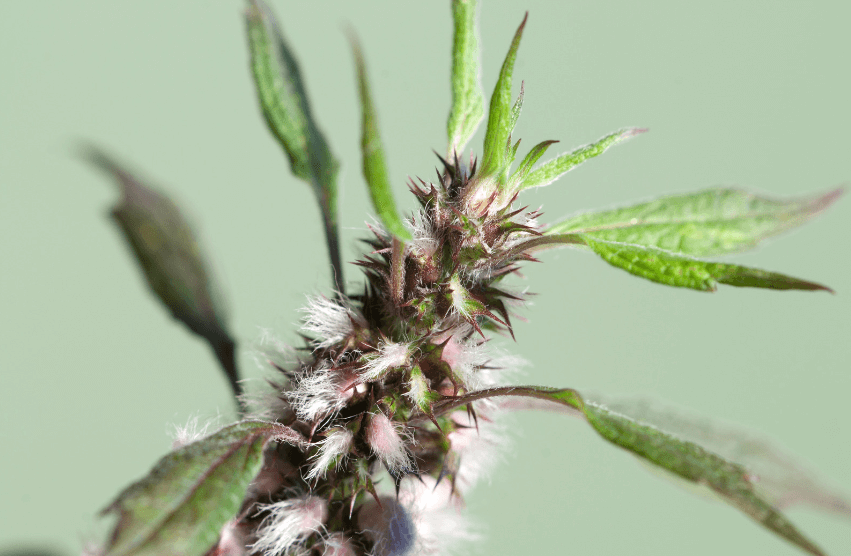
Motherwort
Share

Common Name Leonurus cardiaca,Lion's Tail,Lion's Ear,Throw-wort,Heartwort
Family Name Lamiaceae
Parts Used Stem &Leaf
Herbal Actions Cardiotonic, Nervine, Antispasmodic, Emmenagogue, Hypotensive
Health Benefits Cardiovascular Support, Menstrual Relief, Stress Reduction
What are the Benefits of Motherwort?
Motherwort (*Leonurus cardiaca*), used for centuries across Europe and Asia, is revered in herbal medicine as a powerful tonic for the heart and the nervous system.* Energetically, this herb is considered to have a cooling effect that calms and soothes, with a bitter taste and a grounding application. It is a fundamental herb in various traditional medicinal systems, frequently utilized to enhance emotional balance and support cardiovascular health.
Rich in alkaloids, flavonoids, and phenolic acids, Motherwort acts as a potent antioxidant and anti-inflammatory agent, contributing to its ability to support heart health by reducing heart palpitations and high blood pressure. Its calming properties make it especially beneficial for reducing anxiety and stress, enhancing overall well-being.*
Motherwort's versatility extends beyond medicinal uses; it is also incorporated into wellness practices through tinctures, teas, and capsules, contributing to its role in daily health routines. Traditionally, it has been used not just as a remedy but as a supportive herb for women, particularly in managing symptoms of menopause and menstrual irregularities. This broad range of uses underscores its value in promoting not only physical health but also emotional and hormonal balance, making Motherwort a cherished herb in the holistic health community.
Historical Use of Motherwort
Motherwort (*Leonurus cardiaca*), known for its medicinal and symbolic significance, has been esteemed among various indigenous and traditional communities across Europe and Asia for centuries. Historically, motherwort has been much more than just a physical remedy; it has held a place in cultural rituals and spiritual practices as well.
In many cultures, motherwort was considered a protective herb, believed to possess the power to ward off evil spirits and negative energy. Its strong association with heart health and emotional balance made it a symbol of inner strength and resilience. This herb was often used in rituals and ceremonies aimed at bringing protection and fortitude to individuals, especially during times of stress and transition.
Among traditional European practices, motherwort was commonly used by midwives and healers not only for its physical benefits—such as aiding childbirth and promoting menstrual regularity—but also for its emotional support during childbirth and recovery. It was believed that the herb could ease the heart and calm the spirit, making it integral to postpartum healing rituals.
Motherwort’s presence in gardens and wild patches near human settlements was sometimes seen as a sign of spiritual protection. In some folklore, planting motherwort at the doorstep or around the home was thought to keep harmful spirits away and safeguard the household.
Furthermore, in ceremonies that marked significant life transitions, such as moving from childhood to adulthood or celebrating a new marriage, motherwort might have been included in herbal bouquets or amulets to promote courage, love, and longevity. These practices illustrate not only the therapeutic dimensions of motherwort but also its deeper cultural and spiritual resonance within the communities that cherished it.
Botanical Description & Habitat
Botanical Description of Motherwort (Leonurus cardiaca):
Motherwort, scientifically known as *Leonurus cardiaca*, is a perennial herb that belongs to the mint family, Lamiaceae. It typically grows to a height of 60 to 120 cm (2 to 4 feet). Motherwort is recognized by its square stems, which are a common trait among members of the mint family. The plant produces clusters of pink to lavender (sometimes white) small, bilabiate (two-lipped) flowers that bloom from mid to late summer. These flowers form in whorls in the leaf axils along the upper part of the plant.
The leaves of motherwort are deeply lobed, often with three pointed lobes, and are arranged in opposite pairs along the stem. The lower leaves have petioles, while the upper leaves often do not. The foliage has a slightly hairy texture, which can make the leaves feel rough to the touch.
Habitat of Motherwort:
Motherwort is native to Central Asia and southeastern Europe, but it has become widespread throughout much of the world, often growing wild. It thrives in a variety of environments but is commonly found in waste areas, along roadsides, and in fields. Motherwort prefers well-drained soil and can often be found in slightly shaded to fully sunny locations.
The plant is relatively hardy and adaptable, capable of growing in poor soil conditions and withstanding neglect once established. This resilience makes motherwort a common sight in gardens and wild areas across different climates. The plant's ability to self-seed and spread can sometimes lead it to be considered invasive in areas outside its native range, where it can quickly colonize and dominate spaces.
